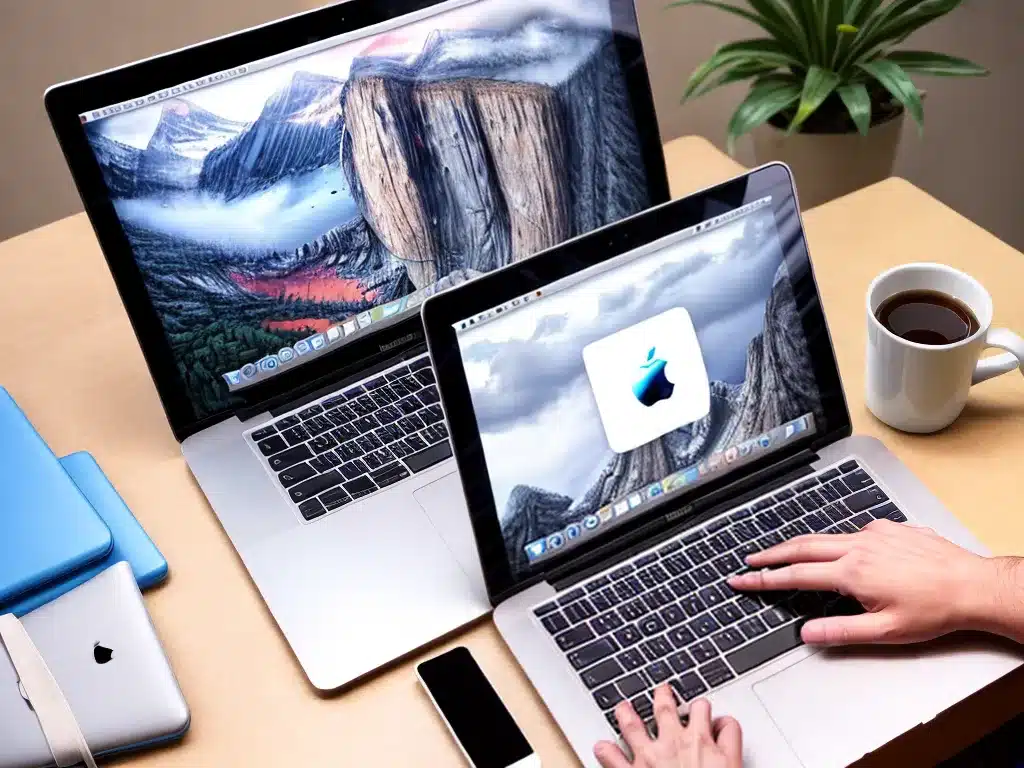
Introduction
As a frequent traveler who relies heavily on my MacBook, having a solid backup plan is essential for protecting my data and ensuring I can keep working if something goes wrong. In this article, I’ll share my top tips for backing up your MacBook while traveling.
Choose the Right Backup Drive
-
Portable SSDs – These solid state drives are light, fast, and durable. Brands like Samsung T5 or Sandisk Extreme are great options. The downside is they tend to have less storage capacity.
-
Portable HDDs – Traditional hard disk drives are larger and cheaper per GB. But they are bulkier, slower, and more fragile. The Seagate Backup Plus Slim is a popular choice.
-
Wireless drives – These let you backup wirelessly without cables. The RavPower FileHub is a good example. But transfer speeds are slower.
I prefer using a portable SSD as my primary backup drive for travel. I use a 500GB Samsung T5 which gives me plenty of capacity without being too bulky.
Use Bootable Clone Backup
-
A bootable clone backup means an exact replica of your entire hard drive. This lets you quickly boot and restore your Mac if needed.
-
Apps like Carbon Copy Cloner and SuperDuper make it easy to create bootable clones.
-
I maintain a bootable clone backup on my Samsung T5 SSD. I refresh it once a week before traveling.
-
Store the backup drive separately from your laptop when traveling. This protects you if your laptop is lost/stolen.
Use Time Machine for Versioning
-
Time Machine is built into macOS and provides versioned backups. It lets you restore previous versions of files.
-
For extra protection, maintain Time Machine backups on your portable SSD drive and an external hard drive at home.
-
Time Machine won’t boot your Mac, but provides an extra layer of data protection.
Encrypt Your Backup Drive
-
Enable full-disk encryption on your portable backup drive. For Time Machine, encrypt the Time Machine partition.
-
Encryption protects your data if your backup drive is lost or stolen.
-
On Macs with a T2 security chip, use FileVault encryption. Otherwise, use a program like VeraCrypt to encrypt external drives.
Use Cloud Storage as Offsite Backup
-
Maintain offsite backups in the cloud in case of theft, fire, or other disaster.
-
Cloud storage like iCloud, Dropbox, or Google Drive work well for offsite backup.
-
I use iCloud to backup my most important files and documents. And do monthly backups of my full system to Backblaze B2 cloud storage.
Automate Backups with Scripts
-
Manually backing up gets tedious. Automate it with scripts.
-
I use a shell script to automate bootable clone backups to my SSD before I travel.
-
Have your script run on a schedule or trigger automatically on VPN connect when you return home.
-
You can also automate cloud syncing with apps like Arq or CloudSync.
Test Restores on Clean Machine
-
Periodically do a full restore test on a blank machine to ensure your backups are working properly.
-
Test restoring your bootable clone, individual file backups, and full system backups.
-
Catch any issues now, not when you actually need to restore on the road.
Keep Backup Drives Safe
-
Use padded cases or sleeves to protect your backup drives when traveling. Consider a waterproof/shockproof case.
-
Don’t leave backup drives in checked luggage where they can be damaged or stolen. Carry them in your hand luggage.
-
Be careful connecting backup drives to hotel workstations – use surge protectors.
Conclusion
- Maintaining both a bootable clone and versioned backups provides the best protection for your MacBook when traveling.
- Encrypt your drives, do offsite cloud backup, and automate the process for convenience.
- And be sure to test that your backups actually work before relying on them.
Following these tips has given me great peace of mind that I can avoid data loss and keep working if disaster strikes while I’m on the road with my MacBook.












